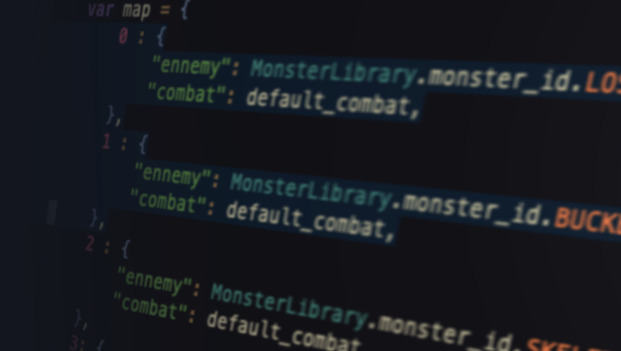Writing GDScript with Neovim
Neovim is by far my favorite text editor. The clutter-free interface and keyboard-only navigation are what keep me productive in my daily programming. In an earlier post, I explained how I configure it into a minimalist development environment. Today, I will show you how to use it with Godot and GDScript.

Configure Godot
First, we need to tell Godot to use nvim as a text editor instead of the built-in one.
Open Godot, and head to Editor Settings > General > Text Editor > External.
There, you will need to tick the box Use external editor, indicate your Neovim installation path, and use --server /tmp/godothost --remote-send "<C-\><C-N>:n {file}<CR>{line}G{col}|" as execution flags.

While in the settings, head to Network > Language Server and note down the remote port Godot is using.
By default, it should be 6005.
We will need that value later.
Connecting to Godot with vim-godot
Neovim will be able to access Godot features by using a plugin called vim-godot.
We will need to edit the nvim configuration file to install plugins and configure Neovim.
On Mac and Linux, it is located at ~/.config/nvim/init.vim
I use vim-plug to manage my plugins, so I can just add it to my configuration like this:
call plug#begin('~/.vim/plugged')
" ...
Plug 'habamax/vim-godot'
" ...
call plug#end()
Once the configuration file is modified and saved, use the :PlugInstall command to install it.
You’ll also need to indicate Godot’s executable path. Add this line to your init.vim:
let g:godot_executable = '/Applications/Godot.app/Contents/MacOS/Godot'
For vim-godot to communicate with the Godot editor, it will need to listen to the /tmp/godothost file we configured in the editor previously.
To do that, simply launch nvim with the flag --listen /tmp/godothost.
To save you some precious keypress, I suggest creating a new alias in your bashrc/zshrc like this:
alias gvim="nvim --listen /tmp/godothost"
Getting autocompletion with coc.nvim
Godot ships with a language server. It means the Godot editor can provide autocompletion, syntax highlighting, and advanced navigation to external editors like nvim.
While Neovim now has built-in support for the language server protocol, I’ve used the plugin coc.nvim to obtain these functionalities for years and see no reason to change.
You can also install it with vim-plug by adding the following line to your plugin list:
Plug 'neoclide/coc.nvim', {'branch':'release'}
Run :PlugInstall again to install it.
You’ll need to indicate the Godot language server address and port using the command :CocConfig.
It should open Coc’s configuration file, which is a JSON file normally located at ~/.config/nvim/coc-settings.json.
In this file enter the following data, and make sure the port number matches the one located in your editor:
{
"languageserver": {
"godot": {
"host": "127.0.0.1",
"filetypes": ["gdscript"],
"port": 6005
}
}
}
I recommend adding Coc’s example configuration to your init.vim file.
You can find it on GitHub.
It will provide you with a lot of useful shortcuts, such as using gd to go to a function definition and gr to list its references.
Debugging using nvim-dap
If you want to use the debugger from inside Neovim, you’ll need to install another plugin called nvim-dap. Add the following to your plugins list:
Plug 'mfussenegger/nvim-dap'
The plugin authors suggest configuring it using Lua, so let’s do that by adding the following in your init.vim:
lua <<EOF
local dap = require("dap")
dap.adapters.godot = {
type = "server",
host = "127.0.0.1",
port = 6006,
}
dap.configurations.gdscript = {
{
type = "godot",
request = "launch",
name = "Launch scene",
project = "${workspaceFolder}",
launch_scene = true,
},
}
vim.api.nvim_create_user_command("Breakpoint", "lua require'dap'.toggle_breakpoint()", {})
vim.api.nvim_create_user_command("Continue", "lua require'dap'.continue()", {})
vim.api.nvim_create_user_command("StepOver", "lua require'dap'.step_over()", {})
vim.api.nvim_create_user_command("StepInto", "lua require'dap'.step_into()", {})
vim.api.nvim_create_user_command("REPL", "lua require'dap'.repl.open()", {})
EOF
This will connect to the language server (here on port 6005), and allow you to pilot the debugger using the following commands:
:Breakpointto create (or remove) a breakpoint:Continueto launch the game or run until the next breakpoint:StepOverto step over a line:StepIntoto step inside a function definition:REPLto launch a REPL (useful if you want to examine values)
Conclusion
I hope you’ll have a great time developing Godot games with Neovim. If it helps you, you can check out my entire init.vim file on GitHub gist.